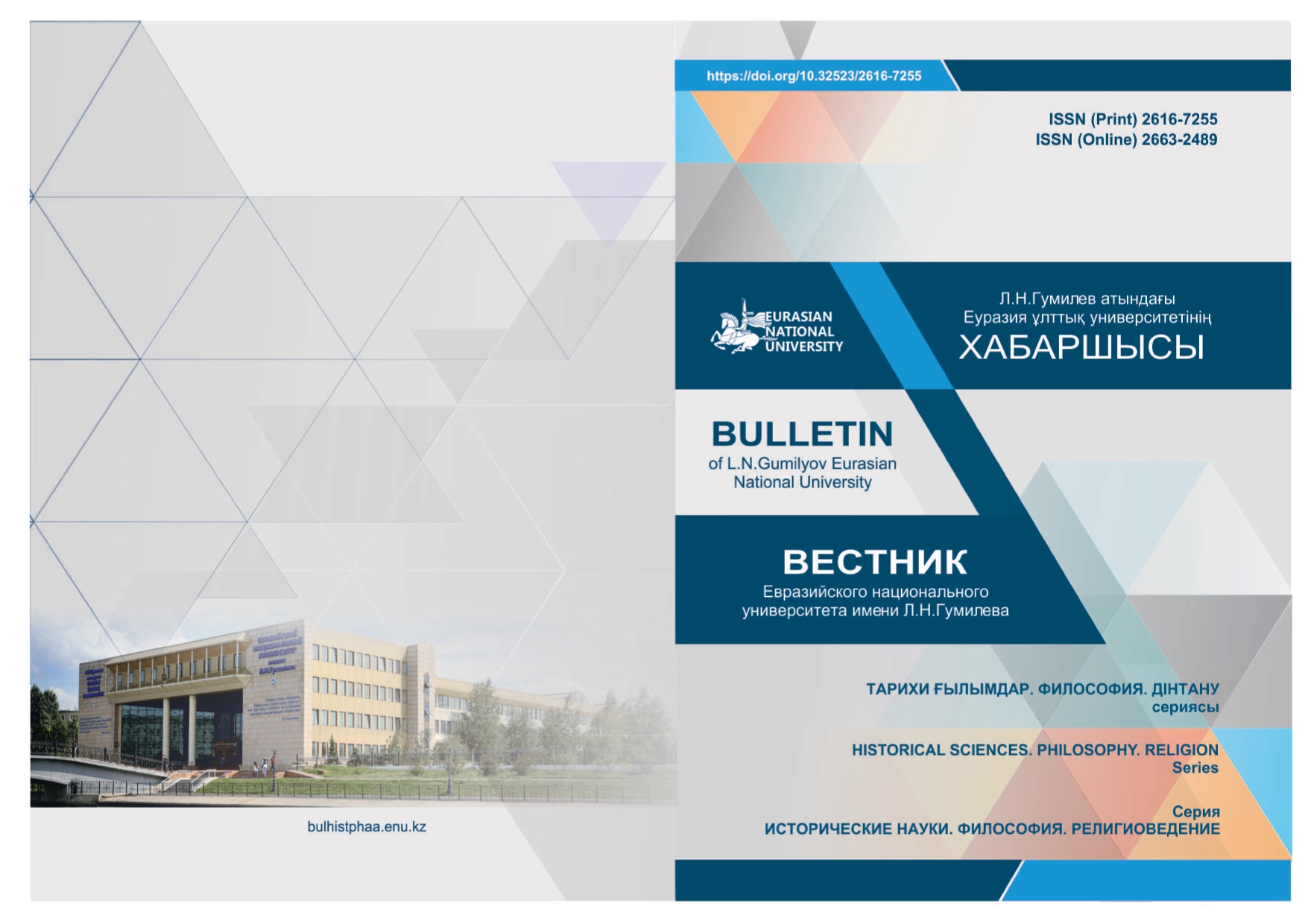Aestheticization of media communication in the context of social reality aestheticization.
Views: 320 / PDF downloads: 146
DOI:
https://doi.org/10.32523/2616-7255-2024-147-2-246-267Keywords:
aestheticization; aesthetics; aesthetic; social reality; perceptual; axiological; pragmatic aspects; media communication; impact.Abstract
Aestheticization of social reality is a multifaceted process that affects various areas of social space and manifests itself as a reconstruction of social relations, social practices and the knowledge. Despite the active use of the term «aestheticization» in the scientific space and in creative activity, the categorical essence of this term remains uncertain, and there is no comprehensive understanding of the essence of the process of aestheticization. In the focus of existing scientific researches in this area are particular manifestations of aestheticization: the aestheticization of politics, science, history, war, violence, death, the aestheticization of everyday life, etc. In our research, we resorted to the historical, epistemological and ontological foundations of aesthetics, which allowed us to suggest a general scientific vision of aestheticization as a macro-process of semantic reconstruction of social reality; develop its three-aspect structure, highlighting the perceptual, axiological and pragmatic aspects. The conceptual foundations of aestheticization thus formed, allowed us to further offer an understanding of the process of aestheticization of media communication that is currently essential. Its essence is to rely on sentient intelligence and smart emotions of the recipient in building the communicative process and in choosing its forms and means. In aestheticized media communication, visual-sensuous and expressively emotive elements dominate over rational ones; imagery, affect and effect are emphasized. By creating new sensually expressive and attractive mass images, media communication not only modifies the forms of sensory perception, but changes the structural archetypes of the modern «media man» and transforms social perception. This reveals the potential of aestheticization in the «fundamental ideological reconstruction» of society (T. Eagleton) through the «aesthetic modulation of the human psyche» (F. Schiller).
Downloads
References
Arceo C. Aestheticization of violence and politics of perception // Academia Letters. 2021. URL: https://doi.org/10.20935/AL2289 (дата обращения: 20.03.2024).
Baumgarten A. Aesthetica. – Hildesheim: Georg Olms, 1961. – 629 р.
Benjamin W. Illuminations: Essays and Reflections. – New York: Schocken Books, 1969. – 278 р.
Dagalp I., Hartmann B.J. From «aesthetic» to aestheticization: a multilayered cultural approach // Consumption Markets & Culture. № 25 (1). – 2021. – Р.1-20.
Eagleton T. The Ideology of the Aesthetic // Poetics Today. – No. 9(2). – 1988. – Pp. 327-338.
Fbaul T.L. Death Aesthetization in Contemporary Artistic Practices // Arte, Individuo y Sociedad. – № 28(2). – 2016. – P. 371-385.
Featherstone M. Consumer Culture and Postmodernism. London: SAGE Publications, 2007. – 232 p.
Hansen K.A. It’s a Dark Philosophy: The Weeknd’s Intermedial Aestheticization of Violence // On Popular Music and Its Unruly Entanglements. – Springer International Publishing, 2019.
Mann B. How America Justifies Its War: A Modern/Postmodern Aesthetics of Masculinity and Sovereignty // Hypatia. – № 21 (4). – 2006. – P. 147-163.
Marchiori D. Media Aesthetics // Preserving and exhibiting media art, eds. J. Noordegraaf, C.G. Saba, B. Le Maître, V. Hediger. – Amsterdam: Amsterdam University Press, 2013. – P. 81-99.
McGregor R. Art and the Aesthetic // The Journal of Aesthetics and Art Criticism. – № 32 (4). – 1974. – Р. 549-559.
Rancie`re J. The Aesthetic Dimension // Critical Inquiry. – № 36 (1). – 2009. – Рp. 1-19.
Schiller F. von 1965 On the Aesthetic Education of Man. – New Haven: Yale University Press, 1954. – 128 р.
Zagidullina M. Сreating an atmosphere: media aesthetic analysis of journalistic prospects // Creativity studies. – № 13 (1). – 2020. – Pp. 152-163.
Zubiri X. Sentient intelligence. – Washington: The Xavier Zubiri Foundation of North America, 1999. – 389 p.
Вакулич Н.Р. Образование и личность в современном социокультурном пространстве // Образование в современном мире. – Саратов, 2009. – С. 106-112.
Войтик Е.А. К вопросу определения медиакоммуникации как понятия // Открытое и дистанционное образование. – № 1. – 2013. – С. 26-31. URL: https://elibrary.ru/item.asp?id=18925095 (дата обращения: 20.03.2024).
Выготский, Л.С. Психология искусства. – М.: Педагогика, 1987. – 344 с.
Гегель Г.В.Ф. Лекции по эстетике: в 2-х т. Т. 2. – М.: Наука, 2007. – 608 с.
Кант И. Критика чистого разума. – М.: Наука, 1999. – 655 с.
Киричкова М.Е., Краснощеченко И.П. Образная сфера психики как фокус работы с проблемами клиента в психотерапевтической практике с позиции разных подходов // Вестник Костромского государственного университета. Серия: Педагогика. Психология. Социокинетика. – Т. 26. № 2. – 2020. – С. 100-106.
Киященко Н. Эстетика – философская наука. – М.: Вильямс, 2006. – 592 с.
Кожемякин Е.А. Дискурс-анализ в современном социально-гуманитарном знании // Человек. Сообщество. Управление. – №3. – 2006. – С. 25-39.
Козырьков В.П. Эстетизация как способ существования современного общества // Труды Нижегородского государственного технического университета им. Р.Е. Алексеева. – № 2(87). – 2011. – С. 264-276.
Колодий, В.В. Визуальность как феномен и ее влияние на социальное познание и социальные практики: автореферат дис… канд. философ. наук – Томск, 2011. – 27 с.
Коломиец Г.Г. Эстетика и категория «эстетическое» // Вестник Оренбургского государственного университета. – № 7. – 2007. – C. 115-125.
Лейбниц Г. В. Сочинения в четырех томах: Т. I, отв. ред. В.В. Соколова. – М.: Мысль, 1982. – 636 с.
Лосев А.Ф. Эстетика // Философская энциклопедия: в 5 т. Т.5, глав. ред. Ф.В. Константинов. – М.: Советская энциклопедия, 1970. – С. 570-577.
Пименов Н.П. Концепты новых форм политической коммуникации в современной России // Известия Иркутского государственного университета. Серия: Политология. Религиоведение. – Т. 11. – 2015. – С. 105-111.
Поцелуев С.П. Символическая политика: констелляция понятий для подхода к проблеме // Полис. Политические исследования. –№ 5. – 1999. – С. 62-75.
Русакова О.Ф., Русаков В.М. PR-Дискурс: теоретико-методологический анализ. ‒ Екатеринбург: Институт философии и права УрО РАН, 2008. – 282 с.
Статкевич И.А. Эстетизация как способ освоения реальности // Вестник Нижегородского университета им. Н.И. Лобачевского. Серия: Социальные науки. – № 3 (15). – 2009. – С. 78–84.
Уланович О.И., Волкова К.П. Когнитивные механизмы и коммуникативные эффекты технологии медиафреминга в моделировании образа «терроризма/экстремизма» в англоязычной политической коммуникации // Вестник Псковского государственного университета. Серия: Социально-гуманитарные науки. – Выпуск 12. – 2021. – С. 97-107.
Шатунова Т.М. Социально-эстетическая онтология современности: эстетизация и глобализация // Ученые записки Казанского государственного университета. Серия: Гуманитарные науки. – Т. 149, кн.5 – 2007. – С. 266-280.
Downloads
Published
Issue
Section
License
Copyright (c) 2024 Aksana Ulanovich

This work is licensed under a Creative Commons Attribution-NonCommercial 4.0 International License.








